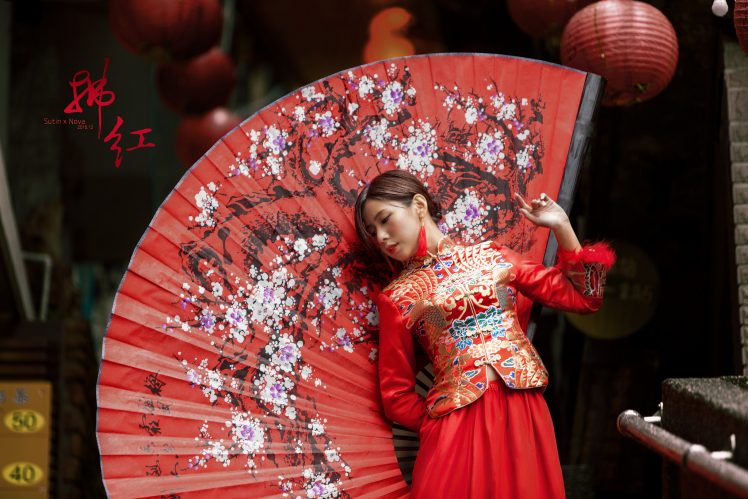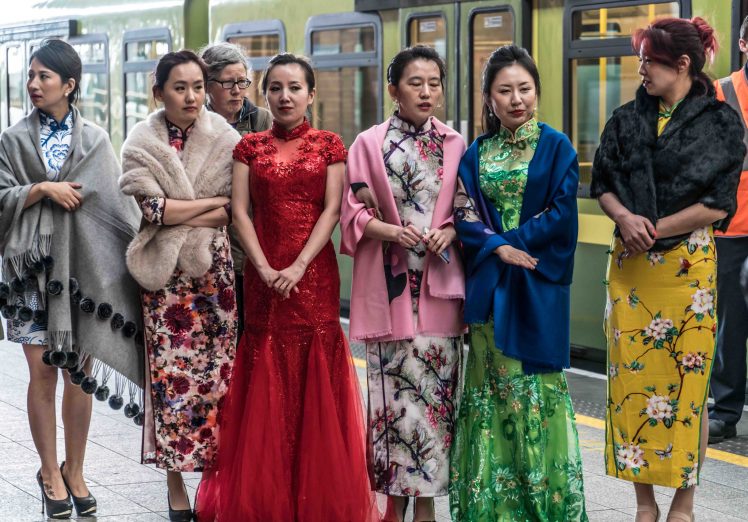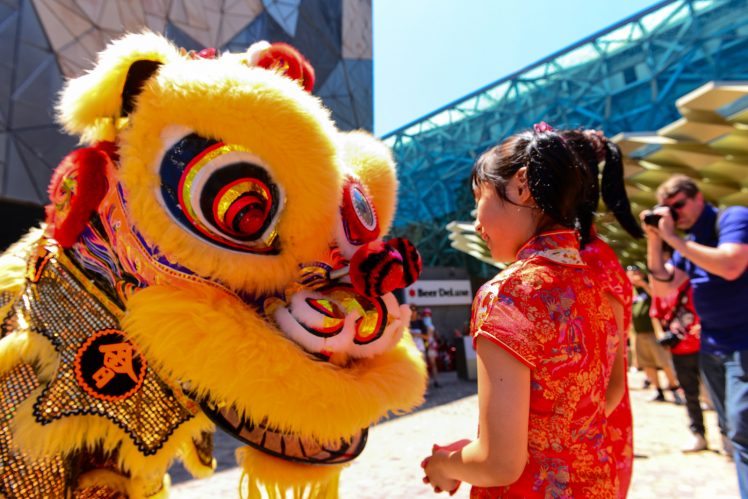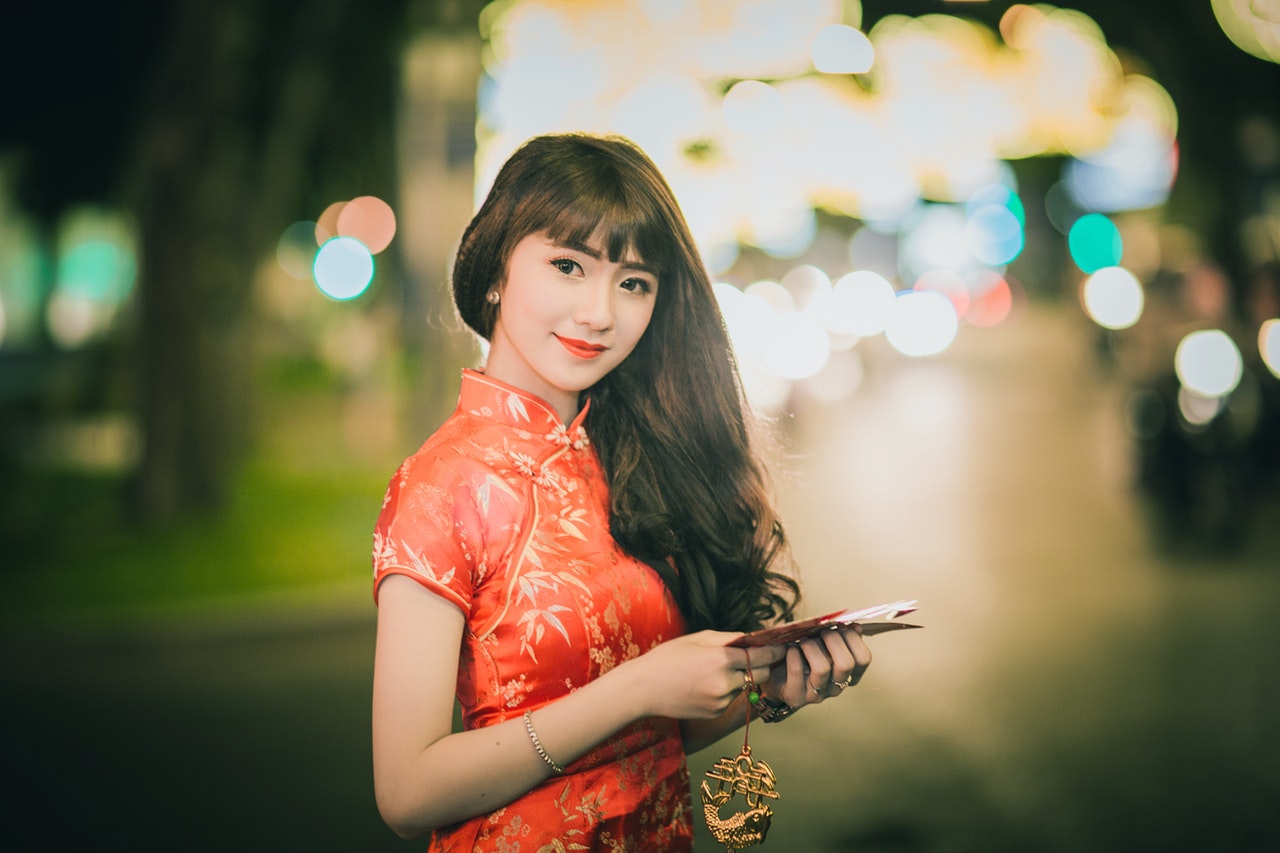The cheongsam is synonymous to the cultural identity of the Chinese all over the world. But did you know that this form-fitting, often sexy clothing was also a symbol of feminism?
The origin

Known as the qipao in Mandarin, the cheongsam is derived from the Cantonese chèuhngsāam; meaning long shirt or dress. Back in the Qing dynasty (17th – 20th century), female clothing was thick and layered. The heavier the material, the more prestigious the lady of the family. Clothing was in two pieces, a long top and loose-fitting pants. Women of high status also wore head accessories and various other ornaments – all of which they had to balance on tiny, platformed shoes they bound their feet in.
When the Qing Dynasty collapsed during the 1911 Xinhai Revolution, a wave of republican ideals fueled by Western teachings swept across China. Women championed the functionality of clothing by wearing male and androgynous robes; and also effectively banned the practice of foot binding that was used to proclaim daintiness of proper ladies. Equality and feminism prospered under the younger generations, and the Qing design of female clothing became altered to suit the current urban statements. The once formless flow of garments shrunk to express the female body distinctively.
The heyday

By the 1930s, the form of cheongsam known to be of Shanghai design marked the Jazz Age of China. This version emphasised the body line of women even further. While it preserved the unmistakable collar and flower buttons, the slimmer hem and coloured silk of the cheongsam evolved it to high fashion. International audiences associated it as the national image of Chinese women as celebrities and socialites wore them proudly. The cheongsam was also shortened from floor-sweeping to ankle and calf lines.
Western fashion also began to make a lasting impact. Darts were added to hip and bust lines to further accentuate form; and zips and press studs made the cheongsam easier to wear than ever. A notable influence was Dior, whose 1950’s emphasis on the waistline led to a world-wide change in design and fashion. Women began experimenting with lace, piping and buttons to add more flair to the sleek dress.
The decline

Unfortunately, in 1949 China faced the Communist Revolution. Idealists pursuing the ultimate form of equality suppressed external influences; and deemed the cheongsam a bourgeois image due to its use as an exotic statement in international circles. Tailors and refugees brought the design of the cheongsam with them to Hong Kong, Taiwan, Singapore and Malaysia.
Outside China, the cheongsam enjoyed being celebrated as a grand fashion statement for its elegant yet simplistic design. Economic crashes however, subjected the cheongsam to another wave of change, and outfitters were driven to designate the cheongsam to non-everyday wear. Silk was traded for cotton, linen and other cheaper materials; and the exquisite flower buttons were switched to mainly press studs for convenience.
In the 1960s, the miniskirt made a controversial addition to the cheongsam. Dubbed the ‘mini qipao’, the new cheongsam garnered disgust from even the generation that kept it safe from suppression for being dishonorable to Chinese ideology. The cheongsam became highly sexualised in addition to its general non-functionality for everyday wear. Chinese women began to favour Western coats, skirts, and suits over the narrow dress.
The one we know today

Today, the cheongsam is mostly an ethnic symbol. It is a dress saved for grand occasions and celebrations; such as weddings and Chinese New Year. While it has been subject to countless influences in its history, it too has spread some inspiration of its own. The mandarin collar, an upright close fitting collar, has been incorporated into many Western-style shirts and blouses, so much that one could say a revival of a design that has survived since the Qing dynasty is underway.
"ExpatGo welcomes and encourages comments, input, and divergent opinions. However, we kindly request that you use suitable language in your comments, and refrain from any sort of personal attack, hate speech, or disparaging rhetoric. Comments not in line with this are subject to removal from the site. "





















